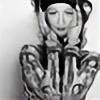HOME | DD
 Rowye — Making animations for your art process - How To
by-nc-nd
Rowye — Making animations for your art process - How To
by-nc-nd
#animation #crp #gif #tutorial #artprocess #artprogress #communityrelations #crphotomanipulation #animatedgif #artanimation
Published: 2018-05-29 13:51:04 +0000 UTC; Views: 1902; Favourites: 58; Downloads: 0
Redirect to original
Description
body div#devskin12515519 hr { }
Process or Step by Step animations are a neat way to show other artists and fans how your artworks began and what process they went through until they were finished. While these don't show the specific techniques used, they can still be quite useful for artists to see your thinking process through the artwork as well as when you decide to apply this or that other effect, lighting, etc.
For those unfamiliar with what process animations are or what they look like, here are a few examples:
This is a detailed tutorial on how to make one of these exclusively within Photoshop. So let's get to it!
Collecting the images
The first step is gathering all the images, one for each step you want to show. How you collect the images is completely up to you.
In my case, since I most often save several PSDs of my artworks, that sort of creates a history of my artwork, and those are what I use as process steps.
You could also merge all layers into a new one every time you decide the current state of the artwork is good to show, and save those within the same PSD.
Another option is using the "Create new document from current state" button in the History window, and saving those as separate files for later use in the animation. However, avoid using the "Create new snapshot" button, as snapshots are not saved in the PSD and will be lost if you close Photoshop.
Naming the images
Naming your images before loading them in Photoshop is important, as that will tell Photoshop in what order the layers must be placed.
To save time and any potential surprises, you can just name the files as 0, 01, 02, 03 etc from older to newer, or add a name after that. Either way it's good practice to start from 0 and also to have a 0 in front of the single digits, as otherwise if you have more than ten layers Photoshop will likely mess up the order.
Loading the images
Instead of loading each image separately and having to manually place them in one file, we're going to batch load all the pictures at once into a single PSD file.
To do that, go to File/Scripts/Load Files into Stack... and in the window that opened click on the Browse... button.
Browse to your saved step images and select all of them, then click Ok. Photoshop will now display all your files in a list in the Loading window with the order it is going to give them. Make sure that "Create Smart Object after Loading Layers" is not checked.
Click Ok and Photoshop will load all the images in a single document in the same order. Should look something like this:
Because we are going to make a GIF file with this we don't want a huge file, before we continue I recommend resizing your document (Image/Image Size or Ctrl+Alt+i) to something no larger than 1200px on either side, preferably less.
The fun part
On the top right corner, change the workspace from Essentials (or whichever you are using) to Motion. Your should now have a different set of windows at your right side, and a new flat window at the bottom named Timeline. If for any reason you don't see the new Timeline window, you can open it from the Window menu, or directly reset the Motion workspace by clicking on Window/Workspace/Reset Motion.
In middle of the new Timeline window click on Create Frame Animation. If you can't see this option, click on the little down arrow next to the button and switch from Create Video Timeline to the correct option, then click on the button to create the animation.
Photoshop will now create a one frame animation of the image as you have it; all your layers are visible, with the oldest one on top. Your timeline will look something like this:
Under the thumbnail of your artwork's first step, click on 0 sec. and in the contextual menu change it to 1.0.
At the bottom left of the Timeline window, click on Once and change it to Forever.
A bit to the right of that button, click on the New icon to duplicate the selected frame. That will create and automatically select a new frame with the image as you have it, which you can control independently from the first frame.
Go ahead and hide your top layer, so that your second step is visible.
Rinse and repeat. Remember to first create a new layer to duplicate the previous, then hide the topmost layer. Go on until only the bottom layer stands, and your animation is pretty much done.
Play the animation using the Play button and check what your animation looks like. Take into account that Photoshop tends to get slow while playing these, so the speed of your final animation will be slightly faster than it is when you play inside Photoshop. You can preview that in the export step.
You can adjust the speed of the animation by playing with the numbers under the thumbnails. If you click on Other you can enter custom time values for the frames.
Note that (at least on my language setting) you must use a comma symbol and not a full stop for decimals.
To select all frames, Shift+click on the first frame then Shift+click on the last frame, or alternatively, click on the top right corner of the Timeline window and find Select All Frames.
To change the speed of only one frame (for instance, to make the last step longer), simply click on that frame to select it and change the time value.
Exporting
Once you're happy with what your animation looks like, go to File/Export/Save for Web (Legacy)... or press Alt+Shift+Ctrl+S to open the Export window.
Make sure your view is set to Optimized to see an accurate preview of your soon-to-be GIF.
At the right side of this window are the export options.
Change the image format to GIF if it's not already set. This may take a bit, especially if you have a ton of layers or your image is large.
As for the settings, these are ok for me but feel free to play with them a bit if you wish. Take into account that every time you change a setting Photoshop has to recalculate the whole thing again so if you didn't downsize your image this process can get quite tedious. You can still now resize the image and change the looping settings down in the Animation section, as well as preview the animation at a sort of accurate speed.
When you're happy with your settings, click on Save... and you're done.
This is what my animation looked like:
I know the tutorial is rather long, but the whole process is actually pretty quick once you've done it a couple of times.
Hope this was helpful to some of you, cheers!
Related content
Comments: 34

esto era lo q necesitaba, mil gracias por el tuto Roger, yo lo hacia muy distinto, voy a probar 
👍: 0 ⏩: 1

Jeje ningun problema, espero que sea útil. 
👍: 0 ⏩: 0

Interesante tutorial, gracias por compartirlo (No tendrás por ahí la versión en spanish, verdad? 
👍: 0 ⏩: 1

Jaja lo siento pero no lo hice en castellano. La verdad que lo pensé, pero era demasiado. xD
Hace tiempo que pienso en hacer tutos en video, esos sí que podría hacer 2 versiones más facilmente. A ver si algún dia tengo el coraje... xD
Me alegro que te gustara igualmente, gracias!
👍: 0 ⏩: 0

So good, man. As someone who doesn't do animation a lot and always trying to find easier ways to do so, this really helpful. Thanks man.
👍: 0 ⏩: 1

I'm glad! You're most welcome, the whole reason I made specifically this tutorial is cause I want to see more of these, so I hope it brings more people to make some. xD
👍: 0 ⏩: 0

I'm glad it was! You're most welcome.
👍: 0 ⏩: 0

If you use "load files into stack", what happens if the image files have different formats/sizes? It seems like a very useful skript but I fear it won't work for me most of the time, since my image sizes always vary a lot.
👍: 0 ⏩: 1

I would say, most likely you will have all aligned to the upper left edge in their original sizes.
To be honest, I don't use this method myself, as I have all in different PSDs, just load them all and do it manually. But I know most people don't save multiple PSDs so I wanted to look for a way that could be best for most of the audience and so I researched this function for the purpose of the tutorial. You could try to check "Attempt to Automatically Align Source Images" and see what happens. xD
👍: 0 ⏩: 0

I've tagged you to see this animation tutorial
👍: 0 ⏩: 1

Oh..ok.. LOL I get it now thanks
👍: 0 ⏩: 1

Most welcome, glad you liked it (even if you didn't need it haha) 
👍: 0 ⏩: 0

Wowowoo Thanks a lot .... I wanted to create mine !!!! Thanks a lot for information !!!!
👍: 0 ⏩: 1

No probs at all, I'm glad to hear that! I want to see more of these from all of you guys, so I can learn from you.
👍: 0 ⏩: 1














